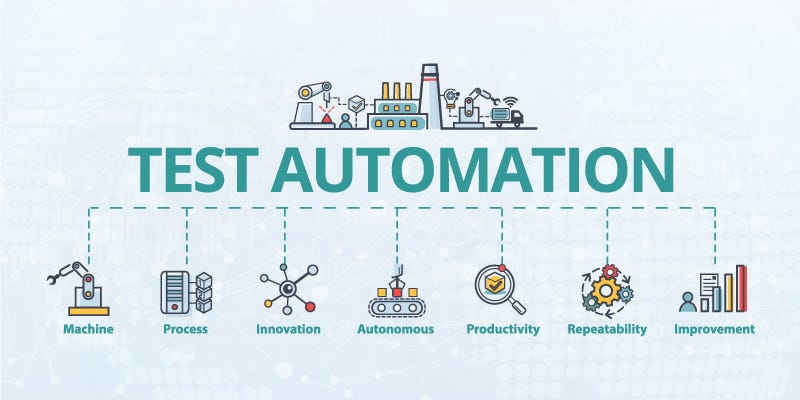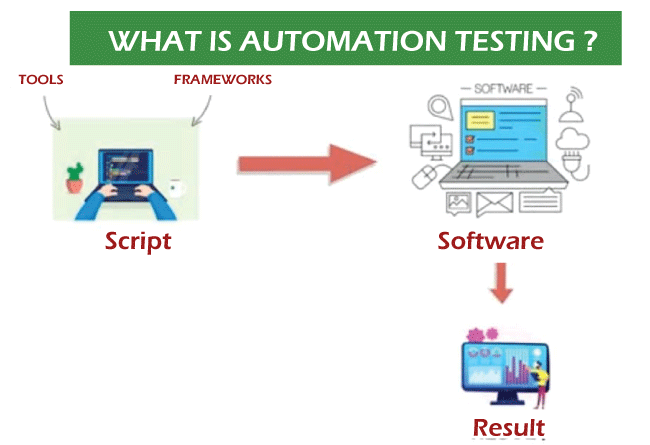The Importance of Automation Testing in Agile Growth Atmospheres
The Importance of Automation Testing in Agile Growth Atmospheres
Blog Article
Ensuring Success in Automation Examining: Key Metrics, Challenges, and Solutions Every QA Team Should Know
In the world of software quality assurance, the landscape of automation screening is ever-evolving, requiring a meticulous approach to make certain seamless operations. The journey to understanding automation screening is led with nuances that call for an eager eye for tracking, analysis, and continual improvement. As the sector pushes onward, the quest for ideal efficiency in automation testing remains a continuous quest, prompting QA groups to equip themselves with the knowledge and approaches important for victory.
Significance of Key Metrics
Recognizing the importance of key metrics is essential for assessing the efficiency and efficiency of automation testing procedures. Secret metrics function as quantifiable measures that provide important understandings into numerous facets of the testing process, such as test coverage, test execution time, defect thickness, and examination case performance. By examining these metrics, QA groups can determine traffic jams, inefficiencies, and areas for renovation within their automation screening framework.
One essential element of key metrics is their capacity to track progression and monitor the general health of the testing process (automation testing). They allow stakeholders to make enlightened choices based upon data-driven understandings, which can cause more reliable testing techniques and much better resource allocation. In addition, vital metrics can help teams set practical objectives, measure the success of automation efforts, and show the ROI of automation testing initiatives

Common Difficulties Faced
Obstacles generally experienced in automation screening procedures can substantially affect the general effectiveness and effectiveness of QA groups. Among the major difficulties is the selection of the best test situations for automation. Not all test situations appropriate for automation, and selecting the incorrect ones can lead to squandered time and sources. In addition, preserving test scripts can be a challenging job, particularly as the application undergoes constant changes. Examination script maintenance calls for continual updates and adjustments to guarantee they reflect the current capability accurately. Another usual obstacle is the initial investment required for establishing up automation frameworks and tools. This can be a barrier for some companies, specifically smaller ones with minimal budgets. Automation testing may not cover all facets of screening, such as usability and customer experience testing, which still require hand-operated treatment. Overcoming these difficulties requires correct preparation, strategic test case selection, robust maintenance procedures, ample sources, and a clear understanding of the restrictions of automation screening.
Reliable Solutions for Obstacles
To address the obstacles come across in automation screening, applying efficient services is necessary for improving the efficiency and performance of QA groups. One crucial service is to buy robust training programs for QA teams to guarantee they have the essential skills to efficiently use automation devices. Training can bridge knowledge gaps, boost understanding of automation structures, and enhance scripting abilities, eventually causing much more effective test development and execution.
One more essential solution is to establish clear interaction networks within the QA team and with other stakeholders, such as designers and task managers. Effective interaction helps in lining up expectations, sharing progress updates, and immediately addressing issues or roadblocks that may develop throughout the automation testing process.

Surveillance and Evaluation Techniques
Applying reliable monitoring and analysis strategies is essential for ensuring the success and effectiveness of automation testing procedures. Furthermore, evaluating test outcomes and metrics provides valuable understandings into the quality of the software being examined and the effectiveness of the screening strategy.
One trick strategy read this article in tracking and evaluation is the use of control panels that settle pertinent metrics and KPIs in an aesthetically accessible style. These dashboards use a detailed review of test execution condition, examination coverage, problem patterns, and other critical details. Consistently examining and analyzing these dashboards can assist QA teams make informed decisions, focus on jobs, and enhance screening initiatives.
Moreover, executing automated signals and alerts based upon predefined limits can improve aggressive surveillance and timely treatment. By establishing signals for efficiency variances or examination failures, teams can address issues quickly and prevent them from rising. In general, surveillance and evaluation methods play a crucial role in guaranteeing the performance and success of automation screening initiatives.
Constant Renovation Approaches
Enhancing the efficiency of automation screening processes necessitates the regular refinement of techniques and techniques. Continual improvement approaches are pivotal for QA teams to adjust to evolving technologies and supply top quality software program products. One vital technique to boosting automation screening processes is to carry out routine reviews and retrospectives. By examining past screening cycles, groups can recognize traffic jams, inadequacies, and areas for enhancement. Applying feedback loops and including lessons discovered into future screening structures can generate significant improvements gradually.

Conclusion
To conclude, it is vital for QA teams to understand the vital metrics, challenges, and remedies in automation screening to guarantee success. By meticulously keeping track of and examining information, carrying out efficient solutions to common challenges, and continuously improving strategies, QA groups can This Site maximize their screening procedures and deliver top quality software. Abiding by these techniques will ultimately cause much more efficient and reliable automation testing methods.
By analyzing these metrics, QA groups can identify traffic jams, inadequacies, and locations for renovation within their automation screening structure.
Additionally, key metrics can assist teams established sensible goals, gauge the success of automation efforts, and demonstrate the ROI of automation screening efforts.
Difficulties typically run into in automation screening procedures can significantly affect the general effectiveness and efficiency of QA groups. Automation testing may not cover all elements of screening, such as usability and user experience screening, which still need hands-on intervention.In conclusion, it is important for QA groups to understand the crucial metrics, obstacles, and solutions in automation testing to make sure success.
Report this page